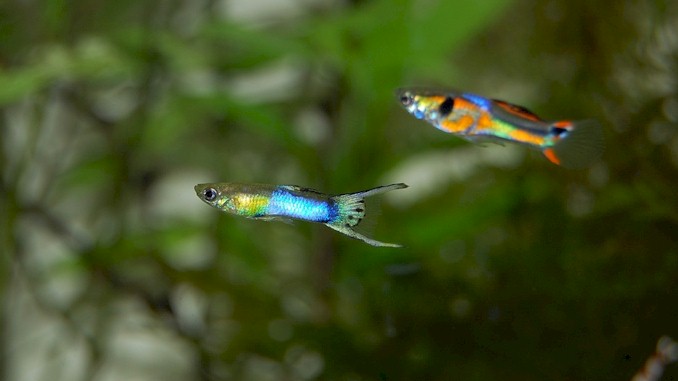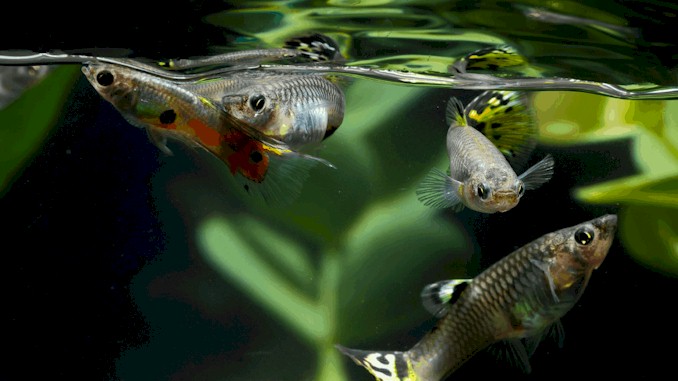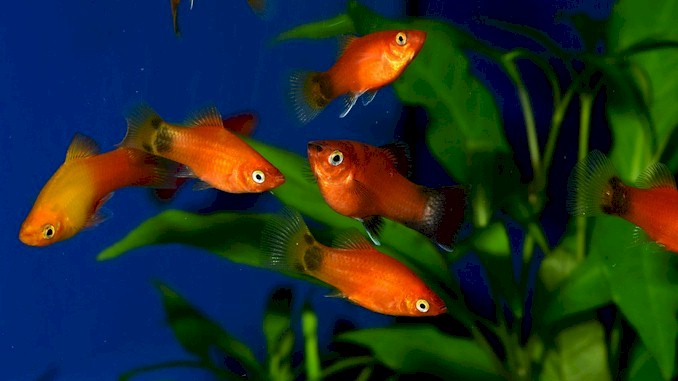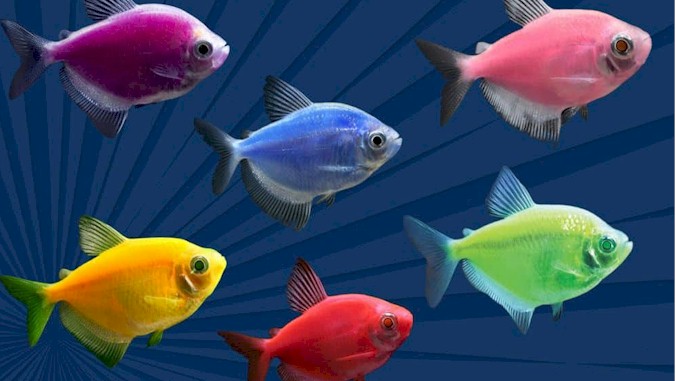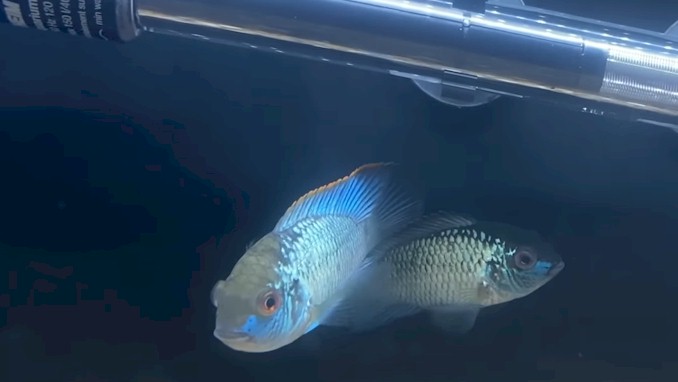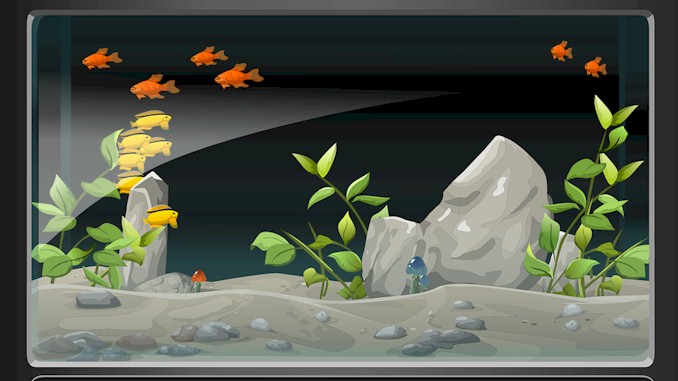Stop Guppies From Eating Their Young: Expert Tips
As a long time guppy owner and researcher, I have encountered numerous questions regarding the behavior of guppies. One common question that keeps popping up is whether guppies eat their babies or not. If you are a guppy owner or considering becoming one, this question might be on your mind too.
Guppies are known to eat their babies, a behavior commonly referred to as cannibalism. This behavior is often observed in aquariums where guppies are kept together with their offspring. However, it is important to note that not all guppies exhibit this behavior, and there are certain factors that may contribute to it.
While understanding why guppies eat their babies is important, it is equally essential to learn how to prevent this behavior. Fortunately, there are several methods you can use to stop guppies from eating their young, and I have all the information you need. From providing ample hiding spots to separating adult guppies from their offspring, I will share practical tips that have been proven to work. So, if you want to learn how to keep your guppies from becoming cannibals, keep reading.
Understanding the Causes of Guppy Cannibalism: Factors That Contribute to the Behavior
Understanding the causes of guppy cannibalism is crucial for preventing this behavior and keeping your guppy community healthy. While cannibalism is a natural behavior in many fish species, it can be alarming and distressing to observe in guppies. Several factors can contribute to guppy cannibalism, including genetic predisposition, environmental factors, and stress.
Genetic predisposition is one of the factors that can contribute to guppy cannibalism. Some guppy strains have been selectively bred for specific traits, such as color, pattern, or fin shape. Unfortunately, this selective breeding can also lead to genetic defects that make some guppies more prone to cannibalism. For example, some guppies may have a stronger predatory instinct or a more aggressive behavior towards their offspring.
Environmental factors also play a significant role in guppy cannibalism. The lack of hiding spots or inadequate space can make guppy fry more vulnerable to predation. Guppies are known to be opportunistic feeders, and if there are no hiding spots available for their fry, they may resort to eating them to meet their nutritional needs. Additionally, overcrowding in a community tank can lead to increased stress levels and aggressive behavior, increasing the likelihood of cannibalism.
Stress is another factor that can contribute to guppy cannibalism. Stress can be caused by various factors, such as poor water quality, inadequate nutrition, or aggression from tank mates. When guppies are stressed, they may become more aggressive towards their offspring, leading to cannibalism. Therefore, maintaining a healthy and stress-free environment is essential for preventing cannibalistic behavior in guppies.
In conclusion, understanding the causes of guppy cannibalism is critical for preventing this behavior in your guppy community. Genetic predisposition, environmental factors, and stress are some of the factors that can contribute to cannibalistic behavior in guppies. By addressing these factors, you can create a healthy and thriving guppy community in your aquarium.
The Importance of Providing Hiding Spots for Guppy Fry: Tips for Creating an Ideal Habitat
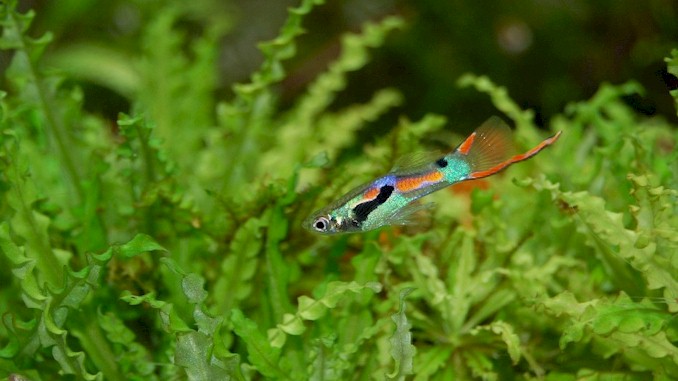
Providing hiding spots for guppy fry is essential for their survival, as it can help prevent cannibalism and reduce stress levels. There are several ways to create an ideal habitat for your guppies, including adding plants, using decorations, and creating natural hiding spots.
Adding live or artificial plants to your aquarium is one of the best ways to provide hiding spots for guppy fry. Plants not only offer protection from predators but also provide a natural environment that can reduce stress levels. Java moss, Java fern, and Anubias are excellent choices for guppy tanks, as they are easy to care for and provide ample hiding spots for fry.
Decorations, such as caves, rocks, and driftwood, can also create hiding spots for guppy fry. These decorations not only add visual interest to your tank but also offer protection from predators. When selecting decorations, make sure they are suitable for your tank size and compatible with your guppy’s needs. Also, avoid decorations with sharp edges or small holes that can trap guppy fry.
Creating natural hiding spots is another way to provide shelter for guppy fry. You can use natural materials, such as coconut shells, terracotta pots, or even PVC pipes, to create hiding spots. These materials can be easily cleaned and sterilized before use, and they provide a natural-looking environment for your guppies.
In addition to adding hiding spots, it is also important to maintain proper water quality and provide a balanced diet for your guppies. Regular water changes, proper filtration, and testing can help prevent stress and promote overall health in your guppies. Additionally, feeding a varied diet of high-quality flakes, pellets, and live or frozen foods can ensure that your guppies receive all the nutrients they need to thrive.
Providing hiding spots for guppy fry is crucial for their survival and can help prevent cannibalism and reduce stress levels. Adding plants, using decorations, and creating natural hiding spots are excellent ways to create an ideal habitat for your guppies. Maintaining proper water quality and providing a balanced diet are also essential for promoting the health and well-being of your guppies.
Separating Adult Guppies from Their Offspring: How to Prevent Cannibalism in a Community Tank.
Separating adult guppies from their offspring is one of the most effective ways to prevent cannibalism in a community tank. While guppies are generally peaceful and easy to keep, adult guppies can become aggressive towards their fry, particularly if they are hungry or stressed. Here are some tips on how to prevent cannibalism in a community tank.
- Use a Breeding Box: One of the easiest ways to prevent adult guppies from eating their fry is to use a breeding box. A breeding box is a small enclosure that hangs inside the tank and allows the fry to grow safely away from the adult guppies. Breeding boxes are available in various sizes and can be easily attached to the side of the tank. They are also easy to clean and maintain.
- Separate the Fry: Another option is to separate the fry from the adult guppies. You can do this by moving the fry to a separate tank or container. A small plastic container or fishbowl can be used to house the fry until they are large enough to be introduced to the main tank. When selecting a container, make sure it is large enough to accommodate the fry and has adequate filtration and aeration.
- Remove the Adults: If you have a heavily planted tank with lots of hiding spots, you may be able to keep the adult guppies in the tank while separating the fry. However, if you notice that the adult guppies are still eating their fry, it may be necessary to remove them from the tank temporarily. You can move them to a separate tank or container until the fry are large enough to fend for themselves.
- Provide Adequate Food: Adult guppies are more likely to eat their fry if they are hungry or stressed. To prevent this, make sure you are providing adequate food for your adult guppies. Feed them a varied diet of high-quality flakes, pellets, and live or frozen foods. This will not only help prevent cannibalism but also promote overall health and well-being in your guppies.
- Maintain Proper Water Quality: Proper water quality is essential for the health and well-being of all aquarium inhabitants, including guppies. Regular water changes, proper filtration, and testing can help prevent stress and reduce the likelihood of cannibalism in your tank.
Separating adult guppies from their offspring is an effective way to prevent cannibalism in a community tank. Using a breeding box, separating the fry, removing the adults, providing adequate food, and maintaining proper water quality are all effective strategies for preventing cannibalism in your guppy tank. By following these tips, you can ensure that your guppies thrive and grow into healthy adult fish.
Feeding Strategies to Prevent Guppy Cannibalism: Choosing the Right Foods and Feeding Techniques
Feeding strategies are essential for preventing guppy cannibalism. As previously mentioned, adult guppies are more likely to eat their fry if they are hungry or stressed. To prevent this, it is important to provide adequate food and use the right feeding techniques. Here are some feeding strategies to prevent guppy cannibalism.
- Choose the Right Foods: Guppies are omnivores and require a varied diet to stay healthy. A high-quality flake or pellet food should be the staple of their diet. However, to prevent cannibalism, it is also important to offer live or frozen foods such as brine shrimp, bloodworms, or daphnia. These foods not only provide a nutritional boost but also help satisfy the guppies’ natural hunting instincts.
- Feed Smaller Meals More Often: Another effective feeding strategy is to feed smaller meals more often. This helps prevent the adult guppies from becoming too hungry and reduces the likelihood of cannibalism. It also helps to maintain good water quality by reducing uneaten food.
- Use a Feeding Ring: A feeding ring is a small device that floats on the surface of the water and helps to contain the food in one area of the tank. This prevents the food from spreading too far and encourages the guppies to eat together. A feeding ring also reduces the likelihood of aggressive feeding and helps prevent cannibalism.
- Feed at Night: Guppies are active during the day and tend to rest at night. Feeding them at night can help reduce stress and prevent cannibalism. It also ensures that the food is consumed before it settles on the bottom of the tank, reducing the risk of uneaten food causing water quality problems.
- Avoid Overfeeding: Overfeeding is a common problem in aquariums and can lead to a variety of health problems, including obesity, constipation, and poor water quality. Overfeeding can also lead to cannibalism as the adult guppies become more aggressive in their search for food. To prevent overfeeding, feed only what the guppies can consume in a few minutes and avoid leaving uneaten food in the tank.
Feeding strategies are a good way for preventing guppy cannibalism. Choosing the right foods, feeding smaller meals more often, using a feeding ring, feeding at night, and avoiding overfeeding are all effective strategies for preventing cannibalism in your guppy tank. By following these tips, you can ensure that your guppies thrive and grow into healthy adult fish.
Breeding Practices to Reduce the Risk of Cannibalism: Tips for Selecting and Pairing Guppies for Reproduction
Breeding guppies can be an exciting and rewarding experience, but it can also increase the risk of cannibalism if not done carefully. To reduce the likelihood of cannibalism, it is important to consider breeding practices that take into account the behavior and tendencies of guppies. One important factor is selecting and pairing guppies for reproduction. When choosing guppies for breeding, it is important to look for healthy and well-formed individuals. Additionally, pairing guppies with similar sizes and temperaments can reduce the risk of cannibalism.
Another important consideration is the breeding environment. Providing ample hiding places and vegetation can help protect the fry from adult guppies. Additionally, separating the fry from the adults can reduce the risk of cannibalism. It is recommended to use a breeding box or a separate tank for the fry until they are large enough to fend for themselves.
Feeding practices can also play a role in preventing cannibalism. Offering a variety of foods, such as live or frozen brine shrimp and high-quality flakes, can help ensure that the adult guppies are well-fed and less likely to eat their young. Feeding smaller, more frequent meals can also reduce the chances of cannibalism by keeping the adults well-fed and less likely to turn to their fry for sustenance.
Overall, reducing the risk of cannibalism in guppies requires careful attention to breeding practices, environment, and feeding strategies. By selecting and pairing guppies carefully, providing ample hiding spots and vegetation, separating fry from adults, and offering a variety of nutritious foods, it is possible to minimize the risk of cannibalism and enjoy a thriving guppy community.

